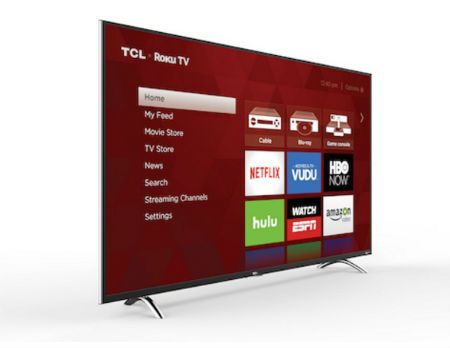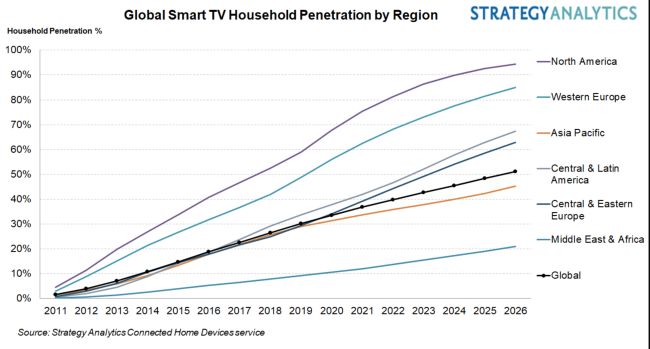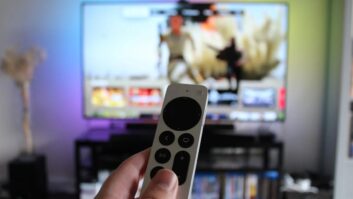
Smart TV penetration into North American households will meet and surpass 90% by 2024, according to data just released by Strategy Analytics.
The research company said that more than 665 million homes worldwide, around 34%, owned a smart TV at the end of 2020. This figure is set to increase to 1.1 billion homes globally, or 51%, by 2026.
“Smart TV is a standard fit feature of most flat-panel TVs sold today and so smart TV household penetration will inevitably continue to grow as consumers replace old sets with new modern smart-enabled versions,” said Edouard Bouffenie, senior analyst, connected home devices, for Strategy Analytics.
Notably, the research company said Korea’s Samsung, which makes its own operating system, remains the top shipper of internet-connected televisions worldwide. However, China’s TCL – which licenses Roku for many of the sets it ships – has usurped Korea’s LG for the No. 2 position globally.
“Smart TV usage is growing and is on a path towards becoming the preferred platform for accessing online video content,” added David Watkins, VP, media and intelligent home practice for Strategy Analytics. “However, the current connected TV landscape in the home is incredibly complex and consumers may have multiple devices in multiple configurations to choose from. Factor in different viewing habits amongst different members of the household and it’s clear that TV streaming platform providers face a significant challenge in driving engagement and ensuring that TV viewers remain on their platform and do not switch to another source. Smart TV OS providers must look to influence the TV viewer’s journey through improved content discovery capabilities, advanced analytics and advertising platforms and the development of an intuitive and user-friendly UI.”

This article originally ran on nexttv.com.
See also: Workers Aren’t Ready To Return To The Office: EPOS Research












